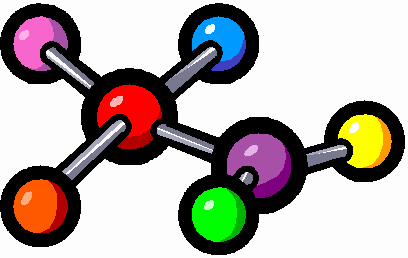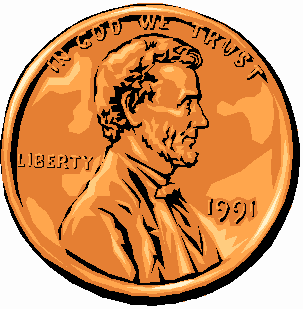
Enzyme-Substrate Model
Introduction:
Enzyme-Substrate Model Introduction:
Enzymes are large proteins that enable chemical reactions of life to take place in living cells by lowering the activation energy. Here are some important rules to remember about enzymes:
Enzymes affect the rate of chemical reactions, but are not changed by the reaction.
Enzymes may be reused for the same type of reaction.
The substance that an enzyme acts upon is called its substrate.
Enzymes are named after the substrate they work on and they are specific for that site.
Enzyme names usually end with the suffix - ASE.
The region where the substrate molecule comes in contact with the enzyme is called the active site.
When an enzyme and substrate come together they form an enzyme-substrate complex.
Certain environmental factors can affect how well an enzyme works. (pH, temperature, substrate and enzyme concentration.)
Some enzymes need the help of a coenzyme to function properly. (Usually vitamins.)
Sometimes, inhibitors are present which can slow down or even stop a chemical reaction from occurring.
| Materials: |  |
Stop watch, 500 pennies, masking tape, graph paper, 4 team members to perform the following roles:
I've got CONTROL
Some like it HOT.
COENZYME FRIEND
The INHIBITOR
Procedure:
I will distribute 500 pennies on the floor. The "CONTROL" member of each group will attempt to pick up as many pennies as possible in 10 seconds, one at a time. There's a catch though; each penny must be placed on the desk so that the head side is facing up before another penny is retrieved. This process will be repeated six times for a period of 10 seconds each time. Other team members will count and record the number of pennies recovered in each trial period. Place this data in "Table I - Team Data - Trial I." When all data is recorded, redistribute the pennies on the floor.
Is it getting warm in here or is it just me? It must be getting warmer because the enzymes are changing shape! Let's see if it's true that some like it "hot." The person playing this role must tape all four fingers together and tape their thumb to their hand to represent the change in enzyme shape. Proceed as before; six trials, 10 seconds per trial, and rememberů.heads up! Record data in your data table under "Trial II." Return all pennies to the floor.
Sometimes things get a little easier with some help from your friends. Do coenzymes really help enzymes do their jobs? Those who served as the "CONTROLS" are going to repeat exactly what they did in trial one, only this time they will have the help of their coenzyme friends! The CONTROL student merely has to pick up the pennies and hand them to their COENZYME who will be responsible for turning them head side down. Remember - six trials, 10 seconds per trial, and record all data in your date table under "Trial III." Return all pennies to the floor.
How well can enzymes do their jobs when they are handicapped (inhibited)? In this last trial, the handicap will be the taping of a tennis ball to the palm of the hand to be used. Obviously, this object may interfere with the ability to pick up the pennies. Try it for six time periods and see what happens. Good luck! Teammates, record the data in Table I - trial IV.
It's time to compile group data for each trial. Record the totals for each trial at each time interval in Table II - Class Data. In order to calculate the total number of pennies selected at any time period, use the following equation:
Total # selected = the sum of all previously selected #'s.
Follow-Up
Prepare of graph of Table II - Class Data by plotting total #'s of each trial vs. final time of each time period. This will result in a linear graph with four lines illustrating the results of the four sets of trial data. To avoid error, plot and draw graph line for each trial separately. (Select a different color for each line and include a key.)
What do the differences and similarities of the slope of each of the lines tell you about the comparative rates of the reactions.
In this activity, what object represented the enzyme? The substrate? The coenzyme? The inhibitor?
In trial I, why did the rate eventually decrease? What could have been added to maintain the initial rate?
If more substrate (pennies) were present in Trial I at the beginning, would the initial rate have been higher? Why or why not?
If we assume that the enzyme is represented by the hand, what happened to the active site during Trial II?
Why does an enzyme not work as well if its active site is changed? What is this called?
What environmental factors affect enzyme shape?
What effect did inhibition have upon the reaction rate?
How might chemicals affect you if they acted like the tennis ball (inhibitor) during your bodily reactions?
Try your hand at naming the enzyme that acts on the following substrates:
Protein
maltose
lipid
Label the following diagram below using the words below:
Enzyme substrate active site enzyme-substrate complex end products
Write the chemical equation for this reaction.
Why is this called the lock-and-key model? How does it differ from the induced-fit model?
Make a mirror image of the substrate. Will the enzyme work? Explain.
Below are the structural formulas for caraway seeds and spearmint.
How do they compare?
How distinguishable are the odors?
How do the chemical properties of these substances compare?
They have the same ______________ formula.
